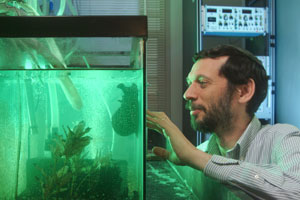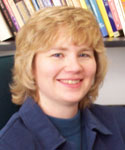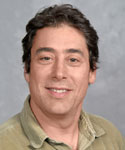| |
|
|
|
|
 Drawing on an understanding of how slugs, leeches, and earthworms traverse their environments and grasp objects, a team of Case biologists and engineers, led by biology professor Hillel Chiel, has developed flexible robotic devices that could make invasive medical procedures safer for patients and easier for doctors to administer. Drawing on an understanding of how slugs, leeches, and earthworms traverse their environments and grasp objects, a team of Case biologists and engineers, led by biology professor Hillel Chiel, has developed flexible robotic devices that could make invasive medical procedures safer for patients and easier for doctors to administer.
The researchers have obtained a patent for a new endoscopic device and a provisional patent for a gripping device that may have industrial as well as medical uses.
Both inventions contain muscle-like, latex "actuators." In the endoscopic device, the actuators inflate and contract in sequence, propelling the device forward so that it can worm its way into curving tubing such as the colon. In the "gripper," one of the actuators contains a mouth that opens and closes, mimicking the manner in which California sea slugs grasp seaweed. This device could meet an industrial need for grippers that can pick up soft objects without destroying them.
With support from the National Science Foundation, Chiel has studied the detailed movements of soft-tissue animals like the California sea slug for nearly two decades, chronicling their behavior on film and with MRI imaging. His collaborators include Roger Quinn, director of the Biorobotics Laboratory in the School of Engineering, and Randy Beer, professor of electrical engineering and computer science, who together designed the robotic devices.
|
|
 Julie Exline, assistant professor of psychology, has found that people with a certain personality type may find it difficult to relinquish justified feelings of resentment and forgive others. Julie Exline, assistant professor of psychology, has found that people with a certain personality type may find it difficult to relinquish justified feelings of resentment and forgive others.
Exline is lead author of an article titled "Too Proud to Let Go: Narcissistic Entitlement as a Barrier to Forgiveness," in the Journal of Personality and Social Psychology. She and her colleagues studied subjects who demonstrated excessive self-admiration and a preoccupation with defending their rights. In responses to actual, hypothetical, and laboratory-based situations, such people were easily offended, exhibited unforgiving attitudes, and failed to let go of their grudges over time.
Exline's research interests involve emotional and social processes and "the many challenges that can arise in spiritual and religious life." Her collaborators on the forgiveness study were Roy Baumeister of Florida State University, Brad Bushman of the University of Michigan, W. Keith Campbell of the University of Georgia, and Eli Finkel of Northwestern University.
|
|
 Recent findings by Glenn Starkman, Armington Professor of Physics and Astronomy, and colleagues contradict the standard view of why temperatures vary from place to place in the universe, and hence from point to point on the sky. And, indirectly, their results challenge previous estimates of when the stars were formed. Recent findings by Glenn Starkman, Armington Professor of Physics and Astronomy, and colleagues contradict the standard view of why temperatures vary from place to place in the universe, and hence from point to point on the sky. And, indirectly, their results challenge previous estimates of when the stars were formed.
Starkman and three collaborators have been studying the cosmic microwave background (CMB): the "afterglow" radiation left over from the early ages of the universe. The CMB is one of the most conclusive pieces of evidence supporting the Big Bang theory— the idea that the universe began some 10 to 20 billion years ago in a hot and dense state, and has been expanding and cooling ever since.
"We see radiation—microwaves—coming to us from every direction on the sky," Starkman says. "The intensity, which is broadly equivalent to temperature, of the radiation varies from place to place by a very small amount." Cosmologists are interested both in small-scale variations (between points on the sky that are close to each other) and large-scale variations (between distant points). That's because these variations "offer great insight into the origin, evolution and content of the universe."
Until now, all of these variations were thought to have originated in the primordial universe. But Starkman and his colleagues believe otherwise. They suggest that the large-scale variations align so closely with the geometry of the solar system, they must be due to effects within the solar system. Some features of these large-scale variations had been interpreted as evidence that stars formed early in the history of the universe. But if these variations have a solar system origin, then the evidence for early star formation disappears. This will come as a relief to most astrophysicists, who were having trouble explaining how stars could have formed so early.
Meanwhile, Starkman says that his team's explanation for large-scale temperature variations raises a new and fundamental problem for cosmologists: where are the large-scale variations imprinted by the larger universe that their theories had predicted? As a Guggenheim Fellow in 2005-06, Starkman will pursue this question at Oxford University's new Institute for Particle Astrophysics and Cosmology.
The research team— which includes Dominik Schwarz of the University of Bielfeld in Germany; Dragan Huterer, formerly at Case but now an NSF Fellow at the University of Chicago; and Case researcher Craig Copi— published its findings in the journal Physical Review Letters. A more accessible version will appear in Scientific American later this year.
|
|